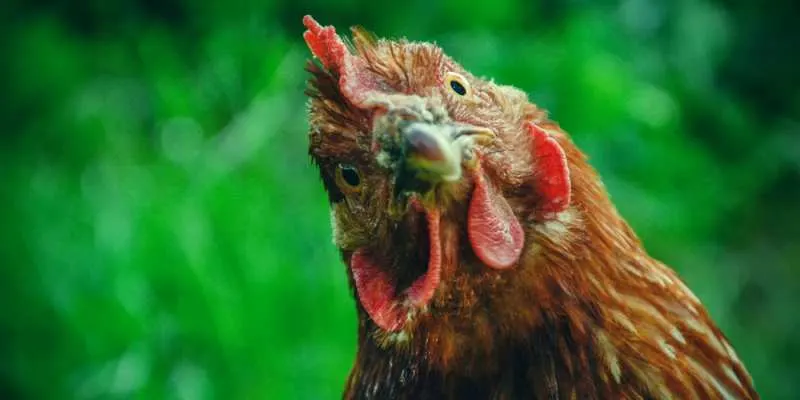As the owner of a small backyard chicken flock, I’m always interested in finding new, healthy treats for my feathery friends. One vegetable I’ve been curious about is cauliflower. I know chickens can’t survive on a vegetable-only diet since they need protein and nutrients only found in their feed. However, vegetables like cauliflower can make for an interesting supplemental snack. So I decided to look into whether chickens can eat this crunchy brassica.
In this article, I’ll share what I’ve learned after hours spent researching online and discussing with fellow chicken owners. I’ll go over cauliflower’s nutritional benefits, any possible downsides to feeding it and the best way to serve it. I hope my experience helps other chicken keepers figure out if cauliflower deserves a spot in their flock’s treat rotation!
The Nutritional Benefits of Feeding Chickens Cauliflower
While cauliflower on it’s own doesn’t provide complete nutrition for chickens, it can offer some great health perks. Here are some of the main benefits:
- Vitamin C – Cauliflower contains decent levels vitamin C. This important nutrient boosts chicken’s immunity to help keep them healthy. It acts as an antioxidant, fights inflammation and helps their bodies absorb iron.
- Indigestible Fiber – The leaves, stalks and florets of cauliflower provide chickens with valuable fiber. This aids their digestion and gut health.
- Antioxidants – In addition to vitamin C, cauliflower contains other antioxidants like vitamin K, manganese and beta-carotene. These help rid chicken’s bodies of harmful free radicals.
- Phytonutrients – Cauliflower gets it’s white color from antioxidant phytonutrients called glucosinolates. These may boost chicken’s immunity against bacterial and viral infections.
So in many ways, cauliflower is a superfood for chickens. It delivers key vitamins, minerals, fiber and disease-fighting compounds with very few calories. Next let’s look at any possible downsides.
Potential Downsides to Feeding Chickens Cauliflower
Cauliflower itself poses little risk to chickens. But there are a couple things we need to keep in mind:
- Can Cause Loose Droppings – If chickens eat a large quantity of fresh cauliflower, it may temporarily cause loose, watery droppings. This is due to the high water content. As long as the cauliflower is introduced slowly, this impact should be minimal.
- Risk of Moldy Veggies – Like most produce, cauliflower can mold if left out too long. Make sure any cauliflower you feed is fresh. Discard any that is spoiled. Consuming mold puts chicken’s health at risk.
- Possible Pesticide Residue – To avoid chemical consumption, try to pick organic cauliflower whenever possible. Thoroughly wash conventionally grown cauliflower to remove pesticide residue before feeding.
The Best Ways to Feed Chickens Cauliflower
Offering raw florets is the easiest way to share cauliflower with chickens. Make sure greens are attached since chickens can benefit from these as well. Here are some serving methods I recommend:
- Chop into Small Florets – Cut or break washed cauliflower heads into bite-sized pieces your chickens can easily pick up and swallow.
- Mix With Other Veggies – For more balanced nutrition, combine chopped cauliflower with healthy greens like kale, lettuce or spinach leaves.
- Include Some Leftover Rice – For variety, sprinkle a handful of cooked rice, quinoa or other whole grain into your cauliflower mix. The combination of vegetables and whole grains makes for a nutritious chicken snack.
- Scatter Around Run – Scatter small piles of cauliflower pieces around your chicken’s run or grazing area. This gives them something interesting to forage for and nibble on throughout the day. It keeps them happily occupied.
I recommend starting with just a handful or two of cauliflower pieces per chicken. Monitor to see if they like it and make adjustments as needed. Small daily portions lets them benefit without overdoing it.
My Flock’s Experience with Cauliflower
I’ll wrap up by sharing how my own chickens liked cauliflower after I introduced it. Like any food trial, it’s interesting to see individual bird’s reactions.
When I first offered small raw cauliflower florets with kale to my six chickens, five of them came rushing over. They clearly knew this vegetable was something new and exciting! All but one hen eagerly gobbled up the pieces.
Clover, my most timid bird, held back at first. But after seeing the rest enjoy it with no ill effects, she eventually tried cauliflower too. Even she agreed it was tasty!
I continued feeding a few florets two or three times a week along with their layer feed and produce scraps. So far all flock members are still big fans. This makes cauliflower a winner in my book!
The chickens benefit from the nutrients while getting some enriched entertainment. And I benefit from finding another guilt-free kitchen scrap to share with them rather than sending it to the compost. For chicken owners who also grow cauliflower, those outer leaves you’d normally remove also make excellent fodder. It’s a nice way to reduce kitchen waste.
Other Veggies Chickens Can Eat
While cauliflower makes for a nutritious treat, chickens benefit from a diverse diet with lots of different fruits and vegetables. Here are some other healthy produce options you can offer your flock:
- Leafy Greens – Greens like kale, spinach, Swiss chard, lettuce, arugula and tops of veggies like carrots are great for chickens. They have vitamins A, C, K and minerals like calcium, potassium and folate. Introduce new greens slowly, just a little at first.
- Squash & Pumpkin – Chickens love all kinds of squash – acorn, butternut, pumpkin, zucchini, yellow squash. These have vitamin A, niacin, folate and copper. Squash gives chickens nutrients for brighter yellow egg yolks.s.
- Cucumbers & Melons – Chickens can eat cucumbers, cantaloupe, watermelon. These watery fruits have manganese, vitamins C and K, potassium and antioxidants. They make good summer treats. Just remove the hard rinds first.
- Berries – Berries like strawberries, raspberries, blackberries and blueberries provide vitamin C, antioxidants and polyphenols. Give each chicken just a few crushed berries as a treat. Too many can cause loose poop.
- Apples/Pears -Chickens enjoy sweet apples and pears. These have vitamin C and fiber. Chop into small pieces and limit to just a few slices per chicken. Too much can spike their blood sugar.
- Corn – In small amounts, corn cobs, husks and silky threads are safe chicken treats. Corn has carbs, vitamins C and B. But don’t give too much at once or it can cause loose droppings
As you can see chickens can benefit from a rainbow of different produce. Rotate what you offer for maximum nutrition and variety. Always start with small portions to see what your flock likes best!
Tips For Raising Healthy Backyard Chickens
When embarking on chicken ownership, we want to set our flocks up for optimal health and happiness. Here are my top tips for keeping backyard chickens thriving:
- Prioritize Ventilation – Ensure coops have good airflow and ventilation without being drafty. This prevents dangerous moisture buildup and ammonia that allows illness to take hold. Make sure bedding stays dry.
- Give Access to Outdoor Space – Chickens aren’t made to live only indoors. Having a safe outdoor run or yard area lets them get sunshine, fresh air and exercise. This all supports proper bone development and respiratory health.
- Offer Complete Feed – While treats are fun, complete layer feed should make up 80% of a chicken’s diet. It’s carefully formulated with protein, carbs, vitamins and minerals chickens need. Don’t try creating homemade feed unless you consult an avian nutritionist.
- Protect Against Predators – Secure outdoor areas against local predators like foxes, coyotes, raccoons or neighborhood dogs. Bring susceptible chickens indoors overnight. Invest in high quality coop locks. Predator attacks are a leading cause of chicken death that’s 100% preventable.
- Keep Stress Low – Chickens are prey animals genetically prone to stress. Overcrowding, loud noises, harassment by pets or kids and other stressors weaken their immune systems. Do all you can to reduce stimuli that trigger freak outs. Happy birds stay healthier.
- Quarantine New Arrivals – Buy birds only from reputable breeders. Keep new chickens separated 3-6 weeks before introducing them to your flock. This prevents existing birds from exposure to contagious diseases the newcomers may unknowingly carry.
- Act Fast On Illness – Learn the signs of common chicken illnesses. Be prepared to isolate and treat any bird showing symptoms before issues spiral. Having a chicken first aid kit on hand allows you to respond quickly.
With attentive care, fresh air, space to roam, proper feeds, clean housing and preventative health measures, backyard chickens can live happy lives for 5-10 years. Paying attention to their wellbeing from day one gives every bird it’s best chance.
Does Cauliflower Fit Into Specialty Chicken Diets?
Now that we’ve covered the basics, what about feeding cauliflower to chickens on specialized diets? Here are my thoughts:
- Egg-Laying Hens – As mentioned earlier, cauliflower makes for a nutritious occasional snack for active, egg-laying hens. It’s antioxidants and phytochemicals support continued high egg production over years.
- Meat Birds/Fryers – Pasture-raised meat chickens also benefit from high-fiber, fresh treats like cauliflower. It gives them something low-calorie to graze on between grain feedings to support fullness. This prevents overeating their concentrated feed.
- Baby Chicks – Very young chicks shouldn’t eat cauliflower due to digestive sensitivity. Wait until fully feathered at 6-8 weeks. Then introduce tiny floret pieces along with starter feed.
- Molting/Broody Hens – Molting hens need extra protein for regrowing feathers. Broodies stop laying while incubating eggs. Both groups appreciate Vitamin C-rich treats like cauliflower to stay strong as their nutritional needs shift.
As you can see, cauliflower has a place in most backyard chicken diets. It’s versatile for supporting health regardless of the bird’s stage of life. Adjust serving sizes based on the size and needs of your flock.
Typical Serving Sizes of Cauliflower For Backyard Chickens
When introducing a new food, it’s smart to start slowly with backyard chickens. Their digestive systems need time to adjust. Here are my cauliflower serving recommendations:
- Full Size Hens: 2-4 florets per hen
- Bantam Breeds: 1-2 florets per bantam
- Large Flocks (10+ birds): Scatter feed equal floret portions around a spacious run area. This prevents resource guarding behavior in confined spaces.
- Meat/Fryer Birds: Can handle slightly larger portions thanks to their rapid growth. Offer 3-5 florets per 2-3 pound bird.
Adjust up or down based on consumption level and if droppings remain firm. Serving cauliflower 2-3 times per week gives them just enough to benefit without disrupting digestion.
FAQs
No, baby chicks under 6-8 weeks old shouldn’t eat cauliflower. Their digestive systems are too sensitive. Wait until they mature and introduce tiny floret pieces along with regular starter feed.
Yes, cauliflower is perfectly safe for chickens to eat when introduced properly. It provides nutritious vitamins, minerals and antioxidants. Just start slowly with a few florets at a time to avoid loose droppings.
Yes! Don’t discard the green cauliflower leaves and stalks. Chickens can safely eat these too. They provide valuable fiber, vitamins and phytonutrients.
While nutritious, feeding chickens too much cauliflower could lead to loose droppings or diarrhea if portions aren’t controlled. Stick within the recommended daily serving sizes based on your flock size to prevent issues.
No. While healthy, cauliflower should only supplement a diet based mainly on complete chicken feed and leafy greens. It provides variety but doesn’t fully meet nutritional needs on its own.
The Verdict
I don’t know about you, but I learned so much writing this guide on chickens and cauliflower! Summing up, cauliflower florets make an excellent supplemental treat for backyard chickens thanks to their vitamins, minerals and beneficial plant compounds.
Leafy greens will always be the top vegetable in my flock’s diet. However, adding nibbles of produce like cauliflower keeps their treats exciting and nutritious. It feels good knowing my girls relish munching the bits I’d otherwise throw away too!
I hope you feel confident now exploring cauliflower as another healthy poultry snack option. Just take it slow, follow proper handling methods, and adjust portions based on your chicken’s preferences. Here’s to happy, healthy hens enjoying lots of crunchy cruciferous goodness!




